Top Ontario doctors describe challenges of advising government about pandemic health measures
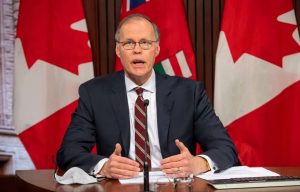
There is a sense of relief this week as Canada’s two most populous provinces — Ontario and Quebec — announced gradual and cautious plans to reopen. But the road to get here has been difficult, in particular for Ontario where COVID-19’s third wave dealt a crushing blow to its health care system, which has seen the most cases to date of any region in the country.
Ontario’s control over COVID-19 pandemic improving, modelling says
Throughout the pandemic the Ontario government has relied on the expertise of doctors, scientists and researchers, many of whom pointed months ago to the dangers of new variants and the potential for a devastating third wave. Ontario’s health crisis was very much predicted.
The National‘s Andrew Chang spoke with four doctors who have played a significant role in advising Ontario’s government on the spread of the virus and the dangers ahead. They shared their views on the challenge of delivering the facts about the pandemic’s projected path, and yet knowing the decisions about provincial public health measures are ultimately not theirs to make.
Dr. Adalsteinn Brown
Dr. Adalsteinn Brown is co-chair of Ontario’s COVID-19 Science Advisory Table, and he is the data-modeller and main point of contact regarding COVID-19 projections for the provincial government. His news conferences, held regularly at Toronto’s Queen’s Park, have become a touchstone of clarity regarding how the virus is moving through the province.
Some of Brown’s colleagues have expressed admiration for how he navigates his relationship with government, putting forward the science but leaving elected officials to manage their response.
“Look, government has to consider a lot of things, not just the science,” Brown told The National. “You really wouldn’t want a world run by scientists. You want people who really reflect the communities that elect them. But we try to bring the evidence forward as strongly, as clearly, as we can.”
Earlier this year, Brown’s modelling showed that if Ontario crossed the red line of 800 patients in intensive care then people would die, whether through a lack of beds or medical staff to care for them. In the weeks that followed, Ontario would reach 900 patients in its ICUs.
Asked whether crossing that threshold suggests an abject failure in terms of provincial pandemic measures, Brown concedes that, “I believe we could have done more to prevent the spread…. And I think, you know, at a time when we’re still probably learning about the disease, more stronger action at that point would have probably reduced the impact of the disease. What we’ve really got to do is get it under control and bring it down to a level that we can actually keep the health system running.”

As for the government’s part in deciding against stronger public health measures earlier in the year, Brown believes it faced a difficult choice.
“There’s a short-term and there’s a long-term on this, right? And it’s my belief that the faster we get it under control, [then] the faster that we get back to a normal way of interacting, the faster that we can have things open, and the faster that we’ve got kids back in school. I really strongly believe that.
“I don’t think that’s universally believed. If you’re someone who runs a small business, if you’re someone who runs a restaurant, or someone who runs a bar, or someone who runs a gym, if you’re someone who’s in the service industry anywhere, there’d be lots of reasons to just reject this outright,” Brown added.
“We’re pretty clear, and we came out with a statement … about what we thought needs to be done. But we’re not the decision makers.”
Dr. Allison McGeer
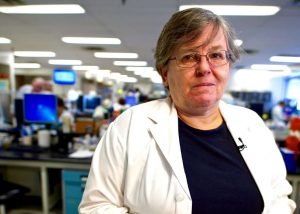
Dr. Allison McGeer is an infectious disease specialist at Toronto’s Mount Sinai Hospital and was a lead investigator during the SARS outbreak. She is also a member of Ontario’s COVID-19 Science Advisory Table that predicted the pandemic’s third wave.
“I think those of us who live and breathe COVID knew what was going to happen,” McGeer said.
She has watched Brown expertly steer the provincial Science Advisory Table of about 100 scientists and said it was, “like herding cats.”
And she said she respects how he has taken the table’s reports to the government for consideration, without giving in to personal frustration regarding what recommendations are adopted and how quickly action is taken.
“I think he knows that to bang on the table is not helpful, and it’s just grown-up not to bang the table, and some of us may not be that good at it,” McGeer said.
“People in government know him and they trust him. But you know, that’s what you have to have in public health emergencies is somebody who understands the science but who is trusted by government.
“And in that setting, I mean, even Dr. Brown was not able to convince the government that we needed to move earlier than we did.”
Dr. Lawrence Loh
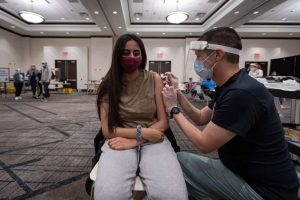
COVID-19 infections in Ontario have had the most devastating impact in Ontario’s Peel Region, which is at high risk for several reasons. It’s the largest producer of so much that is consumed in Canada, hundreds of people work in indoor spaces, and most live in multigenerational homes, resulting in an area vulnerable to what some call “the perfect pandemic storm.”
Peel’s chief medical officer of health is Dr. Lawrence Loh. While he seems unassuming, Loh has moved on his own and moved fast at times during the pandemic.
Recognizing the vulnerability in Peel, he defied the provincial government with strong public health measures, for example, closing bars and businesses, shutting down schools, and taking on the giant online retailer Amazon by shuttering two of its facilities.
The National met with Dr. Loh shortly before one of his weekly news conferences at Mississauga City Hall. Like Brown, he is a study in restraint as he walks a fine line — managing the tension of heeding the science and what he believes will keep his region of Peel safe, while keeping his link with government positive.
Asked to explain the gap between the stronger measures he felt Peel needed and what the government seemed hesitant to implement, Dr. Loh is measured in his response, describing it as “differences in opinion or approach.”
“Is it really just a difference of opinion, though? I mean, this seems to be about disagreement on epidemiology fundamentals, no?” asked CBC’s Andrew Chang.
Dr. Loh wrestled noticeably with his answer.
“I mean, that’s I think where I’m maybe a bit, maybe sort of struggling to answer that question in the sense that, you know, I’m ultimately a scientist at heart and I have to speak to the data and the context and evidence of what I’m seeing in my community,” Loh said.
“I think speaking to how we actually protect them, you know, we’ve made very clear inspections, investigations, ensuring that there’s paid sick days, all those other pieces. And I think to the extent that the province has, through various conversations and dialogue, started to warm up to many of those ideas, I think maybe it’s just [going] to continue to [be a] work in progress and trying to get to a way forward together.”
Dr. Peter Jüni
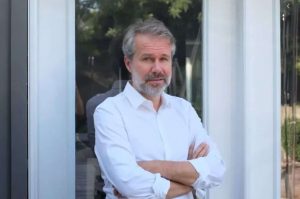
By mid-April the pandemic crisis was deepening in Ontario. While the spread of the virus was recognized inside large workplaces and among sick workers unable to stay home, the Ontario government decided to focus on measures related to other things.
On April 16, Premier Doug Ford announced the closure of playgrounds and increased police powers. Ford quickly walked back some of the measures, but the effect of those decisions shook public confidence and took a personal toll on medical experts like Dr. Peter Jüni, also a member of Ontario’s Science Advisory Table and a key pandemic adviser.
Jüni described this period as his darkest moment in this pandemic, and says he even considered quitting his role as adviser. Jüni said he takes personal responsibility for what he believes was a “misunderstanding” in failing to persuade the Ontario cabinet to follow what he believed was the right course of action at the time.
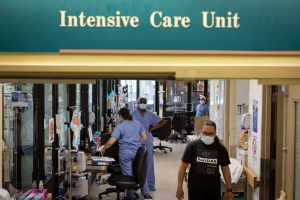
“I actually really felt that there was such a discrepancy between what needed to happen and what was happening. That pointed towards a real misunderstanding of the nature of this pandemic, that I just felt like a tremendous failure personally,” Jüni said.
“We had the situation that we are all aware of — of roughly 50 per cent of this pandemic in this province being driven by essential workers and their families who are out there. And I just didn’t see any of that being acknowledged. And what happened instead is we closed playgrounds. It’s just this discrepancy.”
Asked whether he believes it was a simple misunderstanding, Jüni replied, “I don’t know, honestly.
“Look, it’s mystifying to me…. From my perspective, it’s not understanding that the pandemic is driven by indoor space that is unsafe, and [that it] is driven by people who are unsafe and need to go to work anyway. It’s as simple as that.”






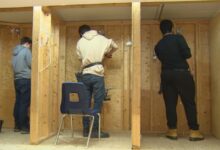
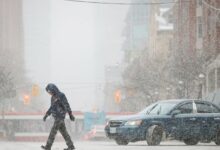
Redes Sociais - Comentários